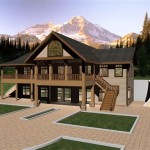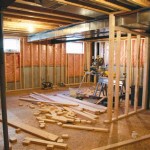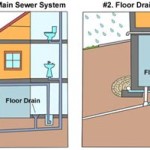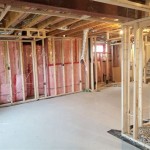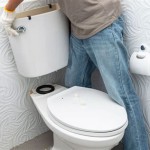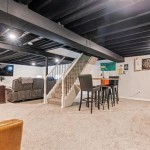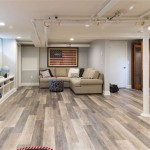Flooring for Basements with Moisture: Essential Considerations and Solutions
Basements often endure moisture challenges, posing unique considerations when selecting flooring. This guide explores essential aspects to consider and provides effective solutions to ensure a durable and aesthetically pleasing flooring system in moist basement environments.
Types of Moisture Problems in Basements
Before choosing flooring, identify the source of moisture in your basement:
* Water Leakage: Deteriorated foundation walls, plumbing leaks, or excessive rainfall can cause water to seep into the basement. * Condensation: Warm air condenses on cold basement walls, creating moisture. * Rising Damp: Moisture from the ground can rise through the concrete slab or basement walls.Flooring Materials for Damp Basements
Select flooring materials that are resistant to moisture and mold growth:
* Ceramic or Porcelain Tile: Impermeable to water and easy to clean. * Vinyl Flooring: Available in waterproof or water-resistant options, including sheet vinyl, luxury vinyl tiles (LVT), and vinyl plank flooring (VPF). * Epoxy Flooring: A seamless, waterproof coating applied over concrete that can withstand heavy moisture.Underlayments for Moisture Protection
Install an underlayment beneath the flooring to provide additional moisture protection and cushion:
* Plastic Sheeting: A vapor barrier that prevents moisture from rising through the subfloor. * Foam Underlayment: Moisture-proof and insulating, providing extra comfort underfoot.Vapor Barriers
Install a vapor barrier under the subfloor or flooring to prevent moisture from penetrating the space:
* Polyethylene Film: A thin, plastic sheet that blocks moisture vapor. * Moisture-Retardant Adhesion Membrane: A self-adhesive membrane that creates a waterproof barrier.Drainage and Ventilation
Ensure proper drainage and ventilation to eliminate moisture buildup:
* Floor Drain: Install a floor drain to redirect excess water away from the flooring. * Dehumidifier: Control humidity levels to prevent condensation and mold growth. * Exhaust Fan: Install an exhaust fan to expel moist air from the basement.Additional Tips for Moisture Control
Consider these additional measures to minimize moisture in your basement:
* Exterior Grading: Slope the ground away from the basement walls to prevent water runoff. * Waterproof the Foundation: Seal foundation walls with a waterproofing membrane or paint. * Inspect Regularly: Check for leaks and cracks periodically to address moisture issues promptly.Conclusion
Choosing the right flooring and implementing moisture-control measures are crucial for a durable and healthy basement environment. By considering the source of moisture, selecting appropriate materials, installing protective underlayments and vapor barriers, and ensuring drainage and ventilation, you can create a basement flooring that withstands moisture challenges and adds value to your home.

Thermaldry Basement Flooring Systems Waterproof

Rotting Basement Floors Flooring Damaged By Rot Mold Water

How To Control Moisture In Basement Flooring Wet Damp

Best Flooring For Basement Renovations

Best Flooring For Basements That Flood Try Waterproof Vinyl

Wet Basement Flooring Options With Built In Vapor Barrier

Rotting Basement Floors Flooring Damaged By Rot Mold Water

Basement Flooring 101 Bob Vila

The Best Flooring Options For Your Basement America

Waterproof Flooring For Basements S Ideas Expert Tips Hgtv
See Also

